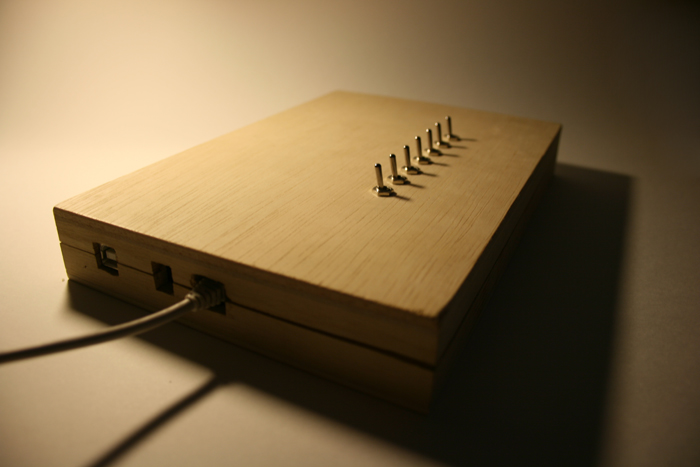Game Controller





Description
Some months ago a colleague of mine told me about a guy who felt kind of tied to the chair in front of his computer all day long and just wanted to move his feet a little while working. So he built himself some kind of pedal that emulates the pressing of some key (I think it was the Ctrl-key) when triggered.
I really liked that idea and began to build a similar kind of device. During conception I came up with more and more ideas of what the controller could become. So I decided to divide the process of building it into three different phases.
- Phase 1: Like the original idea. One pedal that triggers just one key.
- Phase 2: Two pedals that trigger different keys.
- Phase 3: Two pedals connected to the computer by way of a microprocessor.
You might ask yourself what I used the microprocessor for. From the beginning I had in mind to use this controller not just for working but also for playing games. The first idea was to map the space key to one single pedal so the device could make my characters in a large amount of games jump.
The integration of the microcontroller took this idea to a whole new level. After that I was not only able to simply replace a key on the keyboard with the pedal but also to recognize "gestures" and react to them. Let me give some examples to point out how this can work.
- The player alternately presses two pedals. The controller recognizes this gesture and simulates "w" to be pressed. The game character walks.
- Now the player speeds up the alternation. The controller now sends "Shift + w" and the game character runs.
- At last the player stops and presses both pedals simultaneously. The controller now sends "space" and the game character jumps.
In this way I can change the input device of a computer game to my own device that surely has not been taken into account when the game was published without changing the game's source code I do not have access to at all.